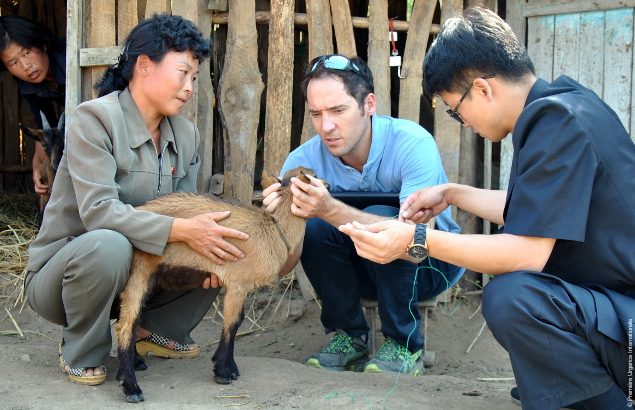Understanding the food and nutrition situation in North Korea
Camille, engineer specialised in agricultural development, gives us keys toward a better understanding of North Korea’s food and nutrition situation.

After attending AgroParisTech Agricultural Engineering School and specialising in comparative agriculture and agricultural development, Camille started working for NGOs in Cameroon, China and Georgia. All these different experiences have led him to an interest in collectivised agriculture and farming system in which farms manage their products as a joint venture. Progressively, he developed a strong interest for farming system and the North Korea’s one in particular.
Camille describes the food and nutrition situation in North Korea:
The food situation in the country is difficult to determine, especially because it is difficult to collect statistical data. The system in place provides a fairly egalitarian share of production in rural area, but rations are systematically below official goals (1). On top of this, the government does not disclose the composition of rations: it gives instead an average equivalent in cereal (with no breakdown according to age or population group). Finally, diet is very limited in diversity, being based on rice, maize, sweet potato, potato, cabbage and soya. (2)
We should also remember that North Korea regularly suffers from natural catastrophes. Floods and droughts, magnified by a lack of infrastructures and by deforestation, worsen the phenomenon of food insecurity affecting the population.
Thus, in 2017, a UN report estimated that malnutrition affects 41% of the North-Korean population (that being 10.5 million persons). Families sometimes compensate with small private production as vegetable garden and some small animals growing. Nevertheless, the joint FAO/WFP mission in 2013, reviewing the meal composition in families, brought to light a calorific deficit of 30% and a protein deficit of 25%.
Première Urgence Internationale’s action:
Since 2008, Première Urgence Internationale has been basing its work on dietary diversification for children by supporting market gardening, rabbit farming, soya milk production and goats’ milk production.
Current programmes are targeting production of protein-rich foods, through the development of goat farming in particular. Indeed, a glass of goats’ milk contains up to a third of the recommended daily amount of protein for children and it is produced throughout the hunger season.
Première Urgence Internationale is working on 2 complementary levels on every link of production. First, in collective farms and households, it trains farmers and provides them with equipment to maintain all stages of production leading up to consumption of dairy products. The objective is to improve fodder quality, farming conditions, herd improvement and veterinary health, milk production and preservation and lastly distribution and hygiene in its consumption.
The second level is regional. By developing the skills of agricultural university lecturers, Première Urgence Internationale is helping to improve the knowledge of regional agricultural management teams (farm managers, engineers, veterinarians, peoples’ committee leaders) to ensure more widespread and better quality production in the long run.
The importance of NGOs’ presence in North Korea
NGOs’ presence is ensuring a precious opening in this very closed country. Together, 6 European NGOs working in North Korea are leading projects in 8 of the 9 provinces in the country, collecting pieces of information and data about the context, negotiating with authorities on every level and pushing humanitarian principles with local population. These organisations are finally allowing very isolated population to be in contact with foreign interlocutors and offering them a window to the outside world.
(1) 18 million persons, 70% of the population, are depending on a public distribution system (PDS). According to UN, rations are systematically under standards of 573 grams per day per person.
To learn more: https://reliefweb.int/report/democratic-peoples-republic-korea/dpr-korea-needs-and-priorities-march-2017
(2) Maize and rice are harvested between August and October and the hunger season stretches between May and August.
